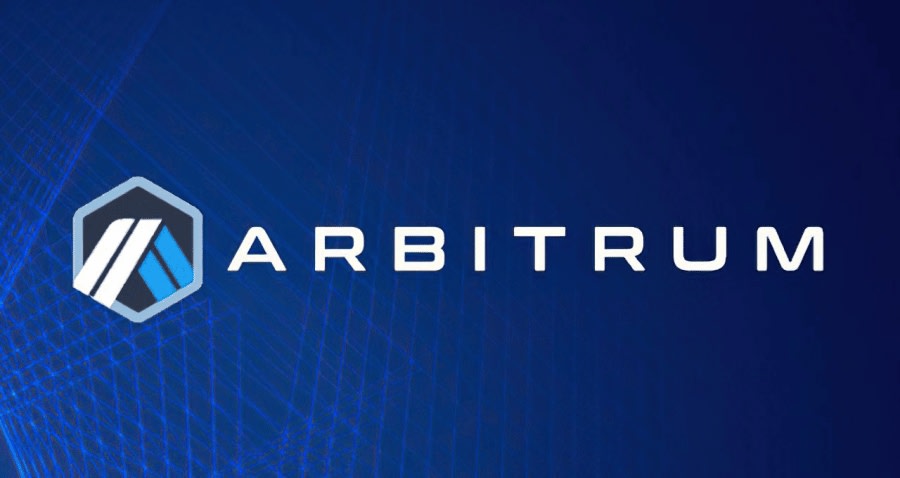$ARB on Osmosis
This bounty aims to analyse the recent listing of the ARB token on the Osmosis DEX, with a primary focus on liquidity incentives and pool activity between ARB/OSMO. Furthermore, we will delve into the dynamics of ARB token holders, transfers, and user behaviour on the Osmosis network. We are particularly interested in whether ARB token users, in terms of swapping and liquidity providing, are new to the Osmosis DEX or are existing users. Additionally, your dashboard should be designed to update with future data and be capable of comparing the launch and incentives of ARB token with a previous token launch on the Osmosis blockchain.

What Is Arbitrum (ARB)?
-
Arbitrum is an Ethereum layer-two (L2) scaling solution. It uses optimistic rollups to achieve its goal of improving speed, scalability and cost-efficiency on Ethereum. Arbitrum benefits from the security and compatibility of Ethereum. Another benefit is the higher throughput and lower fees compared to Ethereum. That is made possible thanks to moving most of the computation and storage load off-chain.
-
Arbitrum’s native token is called ARB and is used for governance. Offchain Labs, the developers behind Arbitrum, announced the shift to a decentralized autonomous organization (DAO) structure the Arbitrum DAO. ARB holders can vote on proposals that affect the features, protocol upgrades, funds allocation and election of a Security Council Link.

Methodology
- This dashboard will investigate the recently launched ARB token to illustrate the performance of this token on the Osmosis network since its inception.
- Also, I try to investigate ARB pool activity, ARB holders, ARB swap stats, and ARB transfer situation and then compare this token to AVAX token to illustrate which one performed better in the first week of its launch.
- Also, I used the Flipside database, specifically the Osmosis schema and the ez_prices, fact_liquidity_providet_actions, fact_pool_fee_day, dim_prices, fact_transfers, fact_swaps, and dim_tokens tables, and I used this contract (ibc/10E5E5B06D78FFBB61FD9F89209DEE5FD4446ED0550CBB8E3747DA79E10D9DC6) for ARB token and this Contract (ibc/6F62F01D913E3FFE472A38C78235B8F021B511BC6596ADFF02615C8F83D3B373) for AVAX token.
- In addition, I try to answer the following questions:
- Total Number of Swaps
- Total Number of Swappers
- Total Swap volume
- Total number of transfer transactions
- Total transfer volume
- Total number of users who transferred their tokens
- and etc.
Summary
- It seems that in recent days, users tend to deposit into the ARB/OSMO pool rather than withdraw from it, as Add Liquidity has the highest number of transactions, users, and volume during this time with an eye-catching difference.
- Moreover,It seems that the ARB Bootstrapping has a positive effect on the activity of the ARB/OSMO Pool since this Pool had a peak on May 15 and 16.
- Also, the ARB token has less than 100 holders on the Osmosis network and they have less than 100,000 ARB in their wallets.
- However, OSMO and USDC are the most popular tokens among users who wanted to Swap To/From ARB token.
- Furthermore, most of the users only made one Swap transaction during the time. In Addition, It seems that the ARB proposals have a positive effect on the transfer criteria as the number of transfer transactions increased after these proposals.
- Although, ARB token has excellent performance from the start, but in terms of comparison between AVAX and ARB, it seems that AVAX performed better in the first week of launch, as it has superiority in Swap and transfer sectors, while that in Pool Sector, I think it is difficult to say which had superiority since AVAX had the highest number of Transactions and Users while ARB had the highest Volume.


Proposal NO. 502
-
This is a signaling proposal to include the Arbitrum pool ARB/OSMO (#1011) into the set of assets that receive OSMO liquidity incentives.
-
After this proposal has passed governance, pool #1011 will be added to the regular incentives program of Osmosis Link.
Proposal NO. 505
-
This proposal would provide initial incentives on the 16th of May by actioning the following:
-
Directly allocating 0.5% of incentives to the ARB/OSMO pool (#1011) Set Minimum incentives for the ARB/OSMO (#1011) pool of 0.5% for 4 routine proposals to retain this level of liquidity incentives while liquidity is built.
-
Bootstrapping incentives indicate that Osmosis stakers wish to quickly establish functional liquidity of ARB to facilitate trading and liquidity flow between Arbitrum and Osmosis via the Axelar bridge Link
Proposal NO. 503
-
ARB is currently the rank 40 cryptocurrency by market cap with a valuation of around $1.4 Billion, 3.5 times higher than Osmosis. The majority of ARB trade volume happens on alternative decentralized exchanges and on centralized exchanges such as Binance, not on Osmosis.
-
According to DefiLlama, the aggregate TVL of Arbitrum protocols is around $2.35 Billion, making it the 4th largest hub for DeFi activity. Ethereum DeFi “blue chips” such as Aave and Uniswap have deployed their respective protocols on Arbitrum, and decentralized perpetuals exchange GMX alone has generated over $100 Million in cumulative fees from margin and trading activity.
-
A recent clustering analysis by Flipside Crypto uncovered a moderate degree of overlap (as measured by co-occurance) between users of Arbitrum One, Polygon and BNB Chain - where Osmosis has already found reasonable success attracting liquidity from. To date, the Axelar bridge has facilitated over 618,000 WMATIC and 3,000 WBNB in transfers to Osmosis from their respective source chains. Further analysis of bridge activity shows that Arbitrum <> Osmosis is a growing source of USDC volume for Squid Router.
-
This proposal asks if Osmosis has a strategic interest in attracting more liquidity of ARB and so will enable it to access a greater proportion of liquidity incentives Link.